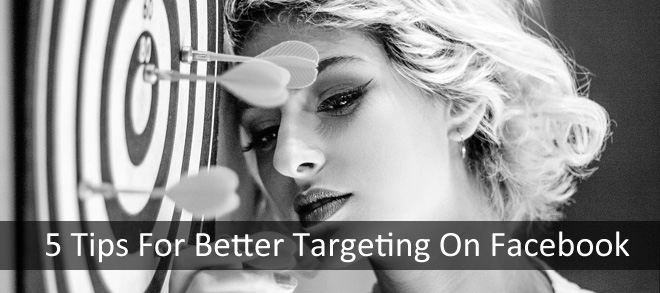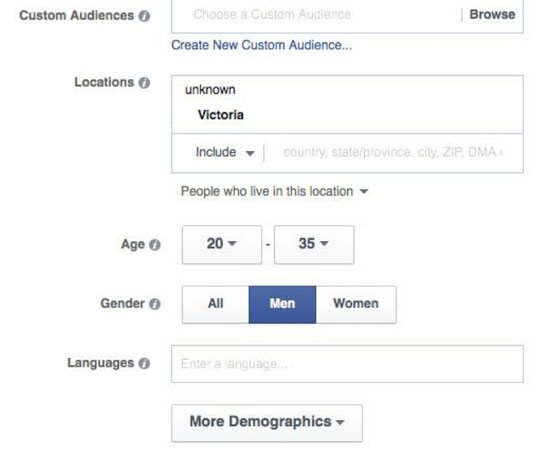No matter what type of business you own or market for, there’s a great chance that your audience is posting, sharing and liking on Facebook. One of the largest and most popular social networking sites today, Facebook boasts over 1.49 billion monthly users – users who are just waiting to connect with you.
Of course, having a massively large pool of consumers doesn’t exactly help you right away. You’ll still have to dig through to find your audience, and if you don’t know how to use certain Facebook ad targeting tools, then you’re going to have a hard time finding your audience among those 1.49 billion monthly users.
So how can you get the most out of Facebook advertising and target the exact demographic with your marketing message? Here are our five best tips for better targeting on Facebook.
1. Go After Your Competitors
You’re having trouble targeting the right audience on Facebook. No matter how compelling your ad copy is or how relevant your ads are, you just can’t seem to tap into your audience no matter how much you play with the settings in Ads Manager, and it looks like your competitor is moving ahead of the pack.
Wait, why not target their audiences?
If your industry has one or two company giants or national brands that attract a lot of followers, you can go after their customer base using Facebook advertising. Go to the ad creation menu and select those large companies from the interests menus. This strategy works best for those with the largest competitors, and when combined with other ad targeting strategies, it can help to lure audiences away from your competition.
For example, let’s say you own a small restaurant in Chicago that specialises in homemade burgers. You want to target people in the local area, but why stop there? Why not target people in Chicago who are following or have liked McDonald’s Facebook page? You already know they most likely enjoy hamburgers, and they might prefer to support a local business rather than a national conglomerate.
Targeting your competition alone might not be enough to reach your audience so be sure to combine this strategy with other ones (targeting by gender, geographic location) to make your strategy even more effective.
2. Create Interest Clouds
When you set your ad’s target using interests, how many interests do you include? Five? Ten? Hopefully more than that. If you’re doing it right, you should be able to create an interest cloud of at least 40 to 50 interests.
Sounds like a lot, right? It certainly is, but if you start your interests broad and then start narrowing it down into specific groups, then you will be able to determine the exact type of people you want to see your ad.
Let’s say your online shoe store is offering a $5.00 off promotion for any customers buying running shoes.
As you probably know, not all running shoes are the same. Some are made for walks; others caters to those who like to run marathons.You can target both demographics and many others by creating an interest cloud and branching out.
Check out some of these tips:
- Start out broadly and work your way in.
- Determine the different demographics that might use your product or service. In the case of running shoes, you have long distance runners, sprinter, walkers, joggers, people training for marathons, people just starting to run.
- Don’t forget pop culture references. You might tag a running-related movie (“Run Forest, run!”), TV show, channel or any type of book or event.
- Tag any celebrities or hosts of those TV shows that people might follow (host of “The Amazing Race”)
- Of course, don’t forget your competition.
When all’s said and done, you should have a strong list of potentially interested buyers.
3. Target The Jobs Of Buyers
Most B2B companies work with people in certain positions within an organisation. For example, a property development company specialising in commercial properties probably works with a lot of business owners, entrepreneurs and maybe even a few general managers. Wouldn’t it be great if there was an easy way to target people in these exact positions?
With Facebook, there is. You can actually narrow down your ad’s reach based on a person’s advertised occupation, allowing you to connect directly with the people who will be making the big decision to work with your company or not. If you target them correctly with Facebook advertising, then you’ll better your chances of sealing the deal.
To use this tactic, go back to the interest cloud, but this time, you’re going to create a cloud of all the positions you want to target – including their relevant hashtags. Again, you will have a very long list, but don’t let the work get you down. The payout will be worth it in the end.
Next scroll down a little farther to “See Advanced Targeting Options” where you’ll see both education and workplaces. From here, you can filter your exhaustive list and help you target a very specific group of people. Perhaps you want to target entrepreneurs who are just leaving college, or maybe you want to get to the Mark-Zuckerberg students – still in school but armed with a killer business idea.
The workplaces option is great if you know of location businesses in your surrounding area that you’d specifically like to do business with. This will be another exhaustive list, but it’ll be crucial to the success of your targeted campaign. Do some research beforehand and suss out all the businesses within a certain demographic that you’d want to target. The more businesses you have, the better chances you have of placing your ad in front of the right sets of eyeballs.
This targeting idea is one of the best for B2B marketers, especially if you work with a certain type of business. It’s a great way to do some local advertising and help get your name out there.
4. Targeting Buying Power
Let’s say you’re selling designer shoes for women. Where in Denver might most of your buyers live? You could just target all of Denver, or you could narrow down your demographic’s location by the postal code so that you target well-known, wealthy areas of town.
If your product is more expensive or could be considered a luxury, then you might be hard pressed to sell to someone who doesn’t have the buying power as a lawyer, doctor or other high-paying profession.
For luxury or as-needed items, the best way to hook a buyer is to:
- Make sure that your product fulfills a want (or a need masquerading as a need), and
- Your buyer has the ability to spare the cash.
When it comes to targeting by geographical location on Facebook, you don’t have to target by city alone. You can target by specific postal codes, meaning you can hyper-target certain areas of cities that your demographics are more likely to live in. This is a great way to put your luxury product right into the hands of those most likely to buy.
Of course, not everyone who lives within a certain postal code has buying power (teenagers for example), so you should further refine your target by narrowing down an age as well as a gender. This will help you focus better on those with the buying power.
5. Go Past Custom Audiences With Lookalike Audiences
You’ve mastered Custom Audiences. You’ve uploaded your database, segmented it and exhausted it. Your buyers are steady, but you know there are others out there who would benefit from your products. It’s time to expand past Custom Audiences and reach out to new and exciting targets with Lookalike Audiences.
Lookalike Audiences allows you to basically copy your Custom Audience and search outward. It takes all the data from your current audience and goes after users who match closely in criteria.
With this feature, you’ll have two options for targeting: similarity or reach. Similarity will present you with an audience so close to your original that you may think they’re all made up (we assure you, they aren’t). However, the list is somewhat small and narrow. Reach will expand the size of your audience, but their interests and profiles won’t be nearly as close to your original list.
Both options have some definitely pros and cons, and they can both be useful at different times. If you’re looking to reach out to all new customers and introduce your brand, you might find the reach tactic to be more effective. If you’re running a specific promotion for a certain demographic, then it might be worth more to chose the highly targeted group.
No one ever said Facebook advertising was easy. It’s an innovative and highly populated platform, and if used correctly, it offers so many benefits to digital marketers. Targeting on Facebook takes some getting used to, but once you master the basics, you can use these tactics to target your buyers and land the best sales.
[Images – Main Photo by lehandross from Pexels; other images, graphics or videos are from their respective websites and/or social platforms]
Mike Bird is an influencer in the social media marketing & Facebook advertising space and contributes to Social Media Examiner, Social Media Today, Yahoo! Business Advisor and most importantly, the Social Garden blog.



Comments are closed.